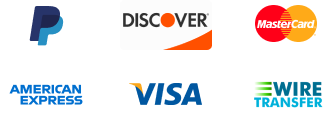The global stomach cancer and gastric cancer drugs market size was valued at USD 4.33 billion in 2024 and is estimated to reach USD 10.48 billion by 2033, growing at a CAGR of 10.32% during the forecast period (2025–2033). The rising R&D investments from pharmaceutical companies and research institutions, coupled with growing clinical trials for novel gastric cancer treatments, are accelerating drug approvals, which is estimated to drive global market growth.
Stomach cancer, or gastric cancer, is a tumor that arises in the gastric mucosa as a result of atypical cellular proliferation. It is often associated with factors such as Helicobacter pylori infection, smoking, diet, and genetic predisposition. Gastric cancer drugs are used to treat this condition through chemotherapy, targeted therapy, immunotherapy, and supportive medications.
Common drugs include fluoropyrimidines, platinum-based agents, trastuzumab (for HER2-positive cases), and immune checkpoint inhibitors like pembrolizumab. These treatments help slow tumor growth, reduce symptoms, and improve survival rates. Early detection and personalized therapy play a crucial role in effective stomach cancer management.
The increasing prevalence of gastric cancer is a significant driver of the market. Factors such as unhealthy dietary habits, high salt consumption, smoking, and Helicobacter pylori infections contribute to the rising cases worldwide. Additionally, an aging population is more susceptible to developing gastric cancer, further fueling demand for effective treatments.
Thus, the growing burden of the disease has led to increased investments in cancer research, early diagnosis initiatives, and the development of novel therapies to enhance patient survival rates.
The detrimental effects of chemotherapy and targeted therapies constitute a significant limitation in the global stomach and gastric cancer drugs market. Chemotherapy frequently induces significant side effects, including nausea, alopecia, tiredness, and immunosuppression, adversely affecting patient quality of life.
Targeted therapies, while more precise, can also cause adverse reactions like diarrhea, skin rashes, and liver toxicity. These side effects often result in treatment discontinuation or reduced patient adherence. Moreover, managing these complications increases the overall treatment cost, creating financial burdens for patients and healthcare systems.
Combination therapies are revolutionizing stomach cancer treatment by addressing drug resistance, enhancing therapeutic effectiveness, and improving patient survival rates. Unlike single-drug treatments, combination regimens leverage different mechanisms of action to target cancer cells more effectively. This approach is particularly beneficial for advanced or metastatic gastric cancer, where monotherapies often show limited efficacy. Thus, there has been a rise in the approval of such stomach cancer and gastric cancer drugs.
Consequently, as innovation continues, combination therapies are set to generate opportunities for the key players in this market and improve patient outcomes globally.
| ATTRIBUTES | DETAILS |
|---|---|
| Study Period | 2021-2033 |
| Historical Year | 2021-2024 |
| Forecast Period | 2025-2033 |
| By Drug Type |
|
| By Cancer Type |
|
| By Route of Administration |
|
| By End-User |
|
| Regional Insights |
|
The chemotherapy drugs segment plays a crucial role in stomach and gastric cancer treatment, often used in combination therapies. Key drugs like 5-fluorouracil (5-FU), capecitabine, cisplatin, and oxaliplatin are widely prescribed to shrink tumors before surgery or prevent recurrence. Despite side effects like nausea and fatigue, chemotherapy remains a primary treatment option, especially for advanced-stage cancer, due to its effectiveness in slowing disease progression.
Adenocarcinoma is the most prominent type of stomach cancer, accounting for over 90% of cases. It arises from the glandular cells of the stomach lining and is often linked to Helicobacter pylori infection, smoking, and dietary factors. Treatment includes chemotherapy, targeted therapy, and immunotherapy, depending on the stage of the disease. Advances in biomarker-driven therapies are improving survival rates, making precision medicine a key focus for this segment.
The oral drugs segment is gaining traction due to its convenience and ability to improve patient compliance. Targeted therapies, like tyrosine kinase inhibitors and oral chemotherapy agents like capecitabine, offer effective treatment with fewer hospital visits. This segment is expanding with the rise of telemedicine and online pharmacies, making access easier for patients. However, monitoring side effects and ensuring proper adherence remain challenges in oral drug administration.
Hospitals dominate the market as the primary treatment centers for stomach cancer, offering specialized oncology care, chemotherapy administration, and surgical interventions. The presence of advanced diagnostic instruments, interdisciplinary treatment teams, and opportunities for clinical trial involvement render hospitals the preferable option for patients. Increasing healthcare investments and improved hospital infrastructure, especially in developing regions, are driving growth in this segment, ensuring better patient outcomes through extensive cancer care.
North America holds a significant share in the global market, primarily due to its advanced healthcare infrastructure, high cancer awareness, and continuous drug development efforts. The region has a high prevalence of gastric cancer, particularly among older adults and ethnic minorities, such as Asian and Hispanic populations, who have a higher genetic predisposition and Helicobacter pylori infection rates. According to the American Cancer Society, an estimated 26,500 novel cases of stomach cancer were diagnosed in the U.S. in 2023, underscoring the growing demand for effective treatments.
The region is at the forefront of innovative drug development, with companies such as Bristol-Myers Squibb, Merck & Co., and Eli Lilly leading the way in immunotherapy and targeted treatments.
Another crucial factor supporting market expansion in North America is government and private sector investment in clinical trials and research. The National Cancer Institute (NCI) actively funds studies on new therapeutic approaches, including combination therapies involving immunotherapy and monoclonal antibodies. Moreover, improved reimbursement policies and cancer care programs are enhancing patient access to innovative treatments, solidifying North America's leadership in the market.

December 2024- BeiGene, Ltd., a global oncology enterprise, announced that the U.S. Food and Drug Administration (FDA) has granted approval for TEVIMBRA® (tislelizumab-jsgr), in conjunction with platinum and fluoropyrimidine-based chemotherapy, for the initial treatment of unresectable or metastatic HER2-negative gastric or gastroesophageal junction adenocarcinoma (G/GEJ) in adults with tumors expressing PD-L1 (≥1).
Request Table of Contents (TOC), Please Fill below form



